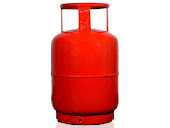Who will tap the shale gas in India?
Booster Shot
As a potential source of cheap and environment-friendly natural gas, shale gas can revolutionise the global energy sector. More and more players outside North America - a pioneer in the business - seem to think so and want to be early birds to catch the worm. Reliance Industries Limited (RIL) sealed a far-sighted $1.35 billion deal on a US shale field, its second big-ticket investment in such assets in America. State-owned ONGC has a pilot project to drill wells in the Damodar basin. Neighbouring China too has woken up. Its largest state oil firm has engaged a Canadian company on possible joint stakeholding in exploitation of British Columbia's reserves. That two of the world's most energy-starved emerging economies have jumped on to the shale gas bandwagon is good news for global clean energy development.
Thanks to shale gas, the US has a gas surplus. Having drastically cut prices even while pushing green energy use, it's a ready example to emulate. Both Asian giants need to prune dependence on fossil fuels and contribute to reducing global greenhouse gas emissions. In India's case, imports service nearly 25 per cent of its gas demand, estimated to grow rapidly in the coming years. And, as the planet's fifth largest consumer of energy, it's burdened with a mammoth import bill for 70 per cent of oil needs. With sizeable estimated shale deposits in the Gangetic plain, Assam, Gujarat, Rajasthan and coastal regions, it can turn to shale gas in a big way since new drilling technologies have made extraction viable.
In this context, China has fashioned a memorandum of cooperation on shale gas with the US. This is expected to lead to transfer of know-how and technology to help it capitalise on huge domestic reserves. Unfortunately, despite talks on the subject, India hasn't pursued a similar partnership. Without the requisite technological expertise, the authorities will find it difficult to implement any national production blueprint. One major reason RIL has tied up with US companies is reportedly to acquire skills in the trade.
Also, India has no business-friendly policy on harnessing non-conventional energy sources. Firms can produce conventional oil and gas. But they have to keep their hands off, say, coalbed methane or shale gas even if they discover coal seams or shale deposits in their exploration blocks. This is patently absurd. India gets periodically trapped in politically fractious debates on fuel price rise or decontrol. Why not instead deal seriously with the structural challenges of energy hunger? Since gas can be a cheaper, cleaner alternative to oil, a promising resource like shale gas shouldn't lie untapped. The faster policy change enables seismic surveys to locate deposits and allows extraction as well as facilitates building of a gas distribution network throughout the country, the better for India's energy future.
Credit:http://timesofindia.indiatimes.com/home/opinion/edit-page/Booster-Shot/articleshow/6106904.cms




